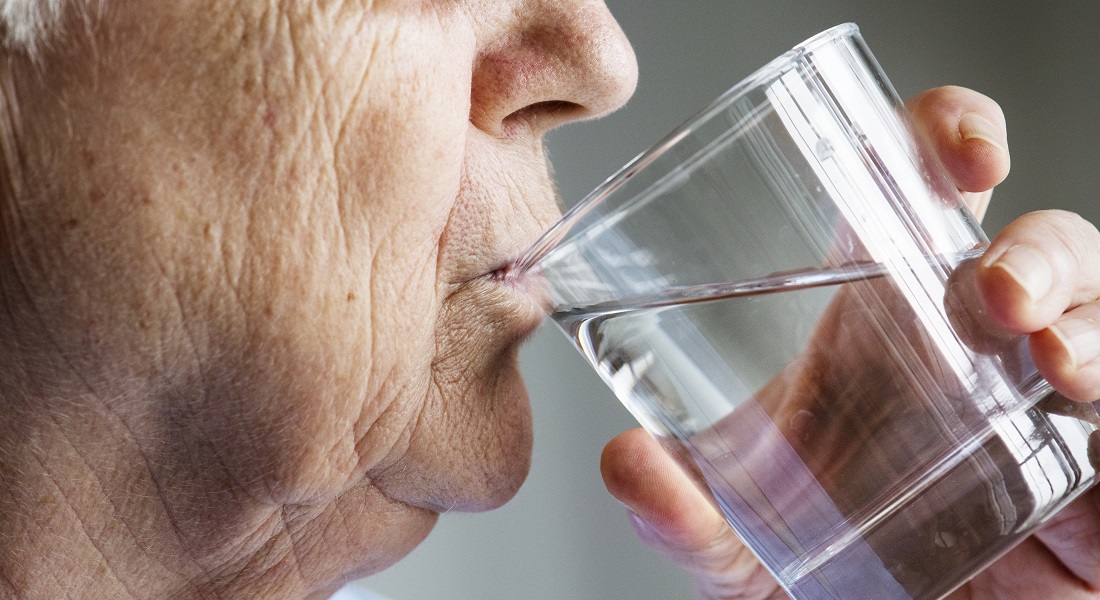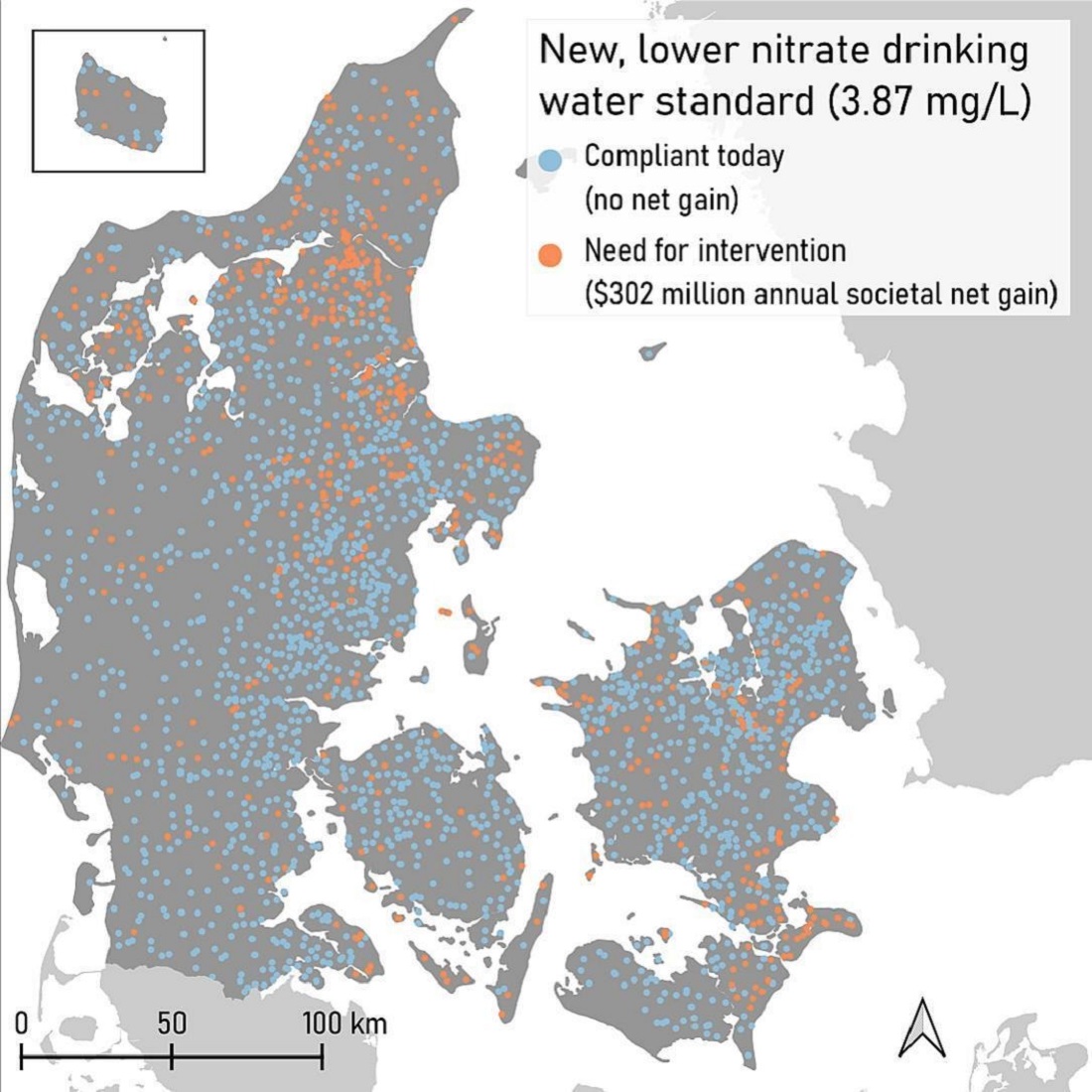We can save lives and millions with less nitrate in drinking water
Denmark could save lives and more than $300 million a year by reducing the amount of nitrate in its drinking water. This, according to calculations by researchers from the University of Copenhagen, Aarhus University and the Geological Survey of Denmark and Greenland (GEUS). An ever-growing body of research concludes that the amount of nitrate in some Danish boreholes increases the risk of colorectal cancer.

Drinking water with high levels of nitrate is a global problem linked to a variety of health problems including birth defects and cancer. For example, there is a growing body of scientific evidence to support that nitrate in drinking water increases the risk of colorectal cancer - the third most common cancer worldwide and the second leading cause of cancer-related deaths, according to WHO.
Studies suggest that the nitrate levels in drinking water will increase in a number of countries around the world especially with increased nitrogen application and economic growth.
Denmark follows the EU limit of no more than 50 milligrams of nitrate per liter of water. Even though concentrations are well below this ceiling across much of Denmark, amounts of nitrate in drinking water are significant enough to increase the risk of developing colorectal cancer in several areas. A large Danish population-based cohort study from 2018 and several international studies have demonstrated this.
A new study by researchers from the University of Copenhagen, Aarhus University and the Geological Survey of Denmark and Greenland (GEUS) demonstrates that Danish society could save more than $300 million a year by reducing nitrate concentrations in drinking water and avoid 127 cases of colorectal cancer annually.
"The EU requirement of no more than 50 milligrams of nitrate per liter of water is a minimum requirement, so we could easily establish stricter requirements in Denmark. Our research shows that this would benefit public health, and at the same time, save society a lot of money," says Brian H. Jacobsen, senior researcher at the Department of Food and Resource Economics at the University of Copenhagen.
Jacobsen is the lead author of the new study, now published in the journal Science of the Total Environment.
Benefits far exceed costs
A Danish population-based study from 2018 shows a statistically significant correlation with an increased risk of colorectal cancer when nitrate levels in drinking water exceed approximately 4 mg/L and an even higher risk when above approximately 9 mg/L.
An analysis of nitrate levels in Denmark’s water supplies shows that roughly 10% of Danish drinking water has a nitrate concentration above 9 mg/L, and an additional approximately 10% is above 4 mg/L as an average for 2018-2021. Most water supplies with these elevated nitrate concentrations are from small, privately owned boreholes that supply less than nine households each. However, it also applies to several hundred larger waterworks, especially in the area around the city of Aalborg. (see map).

"About 20% of Danes drink water with more than 4 mg/L nitrate, while roughly 10% of us have tap water with more than 9 mg/L. That doesn’t mean that you should be worried about drinking tap water. There are many risk factors more important than nitrate in drinking water when it comes to colorectal cancer. For example, your diet, your level of physical activity and whether or not you smoke. But from a societal perspective, it would be good to have less nitrate in water," says Jörg Schullehner, a co-author of the study and assistant professor at Aarhus University’s Department of Public Health.
Based on the results from the population study, the researchers calculated the costs and benefits of reducing nitrate concentrations in Danish drinking water. The benefits far exceed the costs for reducing nitrate levels, regardless of how they are reduced.
"Statistically, approximately 127 annual cases of colorectal cancer in Denmark can be linked to current nitrate concentrations in water. The value of the years of life that one loses on average if diagnosed with colorectal cancer, combined with the health costs of cancer treatment, amounts to many hundreds of millions of kroner per year. So, it is possible for us to save people from a terrible disease while saving society a lot of money," says Brian H. Jacobsen.
If the standard were lowered to a maximum of 9 mg/L nitrate, there would be 72 fewer cases of colorectal cancer and an annual net gain of $179 million. And if the maximum standard is lowered even more, to approximately 4 mg/L, another 55 cases could be avoided – and an additional $138 million saved.
Protect groundwater, move boreholes, treat the water
The researchers deducted the costs associated with reducing nitrate levels in their calculations. Here, they calculated the price of three options.
The main source of nitrate pollution is from nitrogen fertilisers used in agriculture. Thus, the first option is to protect groundwater by, for example, taking agricultural land out of use and converting it into protected zones. With nitrogen no longer being used, less nitrate would find its way into groundwater over time.
The second option is to relocate boreholes away from areas with excessive concentrations of nitrate or drill deeper to avoid the more highly concentrated levels of nitrate in upper levels of groundwater.
The third option is to clean the water of nitrate with technologies (such as denitrification, ion exchange and reverse osmosis) that are used elsewhere but not currently deployed by Danish waterworks.
The researchers calculated the average costs to be $9 million annually to reach a maximum of 9 mg/L nitrate and additionally $6 million annually to reach 4 mg/L.
"Each of the three solutions has its advantages and disadvantages. Local conditions and the time horizon are what will determine what makes the most sense. For example, taking agricultural land out of use is relatively cheap, but it can take up to 50 years before the effect of groundwater protection is truly felt," says Birgitte Hansen, a senior researcher from GEUS.
"Even with the highest costs to remove nitrate and the most pessimistic assumptions about health improvements, there is an economic gain by reducing nitrate levels to a maximum of 9 mg/L," Brian H. Jacobsen points out.
Furthermore, measures to reduce nitrate in drinking water will probably lead to other benefits, concludes Jörg Schullehner:
"You need to remember that we only look at the effects in relation to colorectal cancer here. There could well be other knock-on effects. By purifying water using more advanced methods, we may also be able to eliminate other unwanted substances capable of affecting our health. And if one reduces nitrate emissions from agriculture, we also protect other parts of the aquatic environment and nature from the negative effects of nitrogen. So, these are actually very conservative calculations."
Contact
Brian H. Jacobsen
Senior researcher
Department of Food and Resource Economics
University of Copenhagen
brian@ifro.ku.dk
+45 35 33 68 73
Maria Hornbek
Journalist
Faculty of Science
University of Copenhagen
maho@science.ku.dk
+45 22 95 42 83
